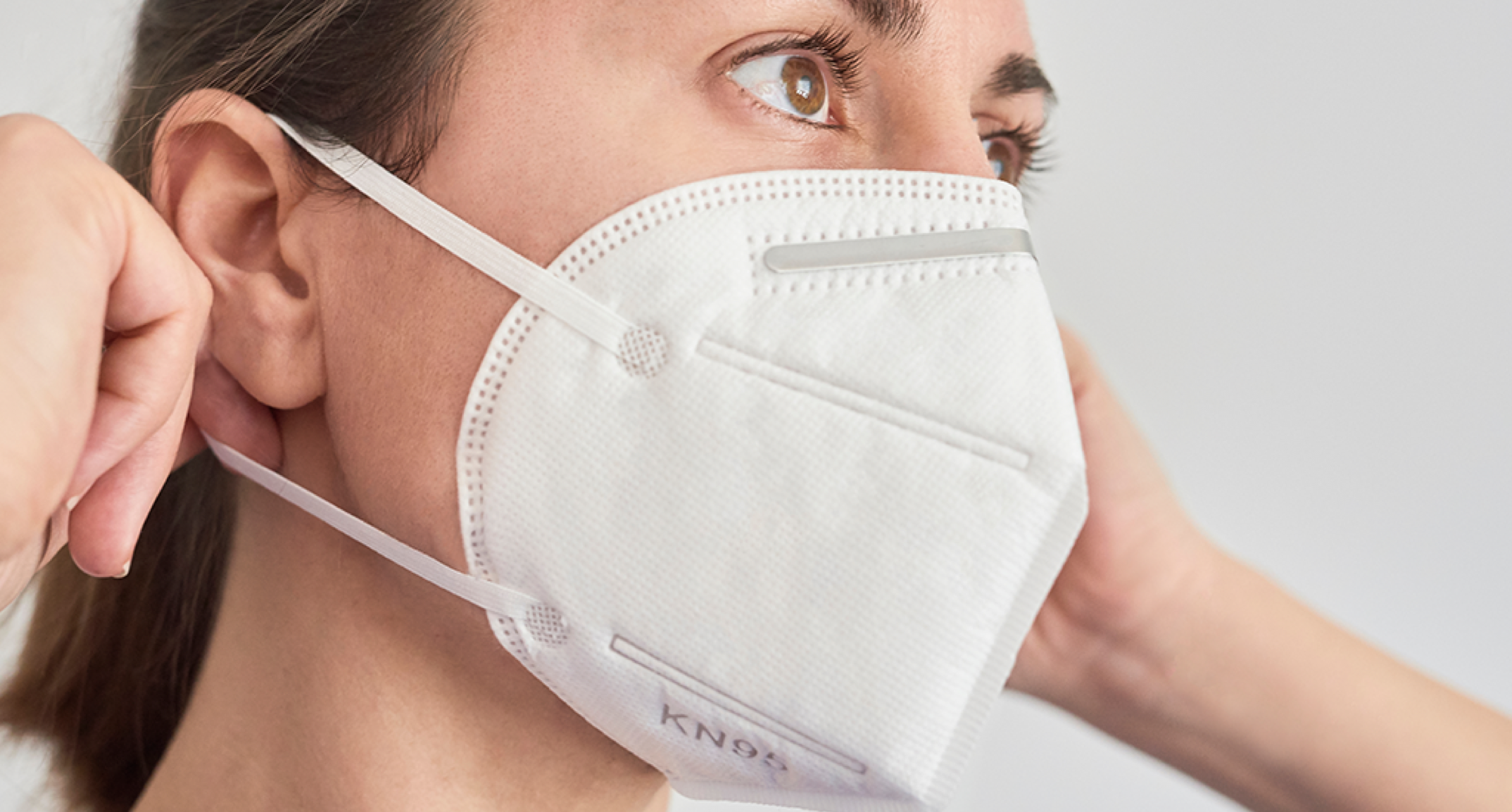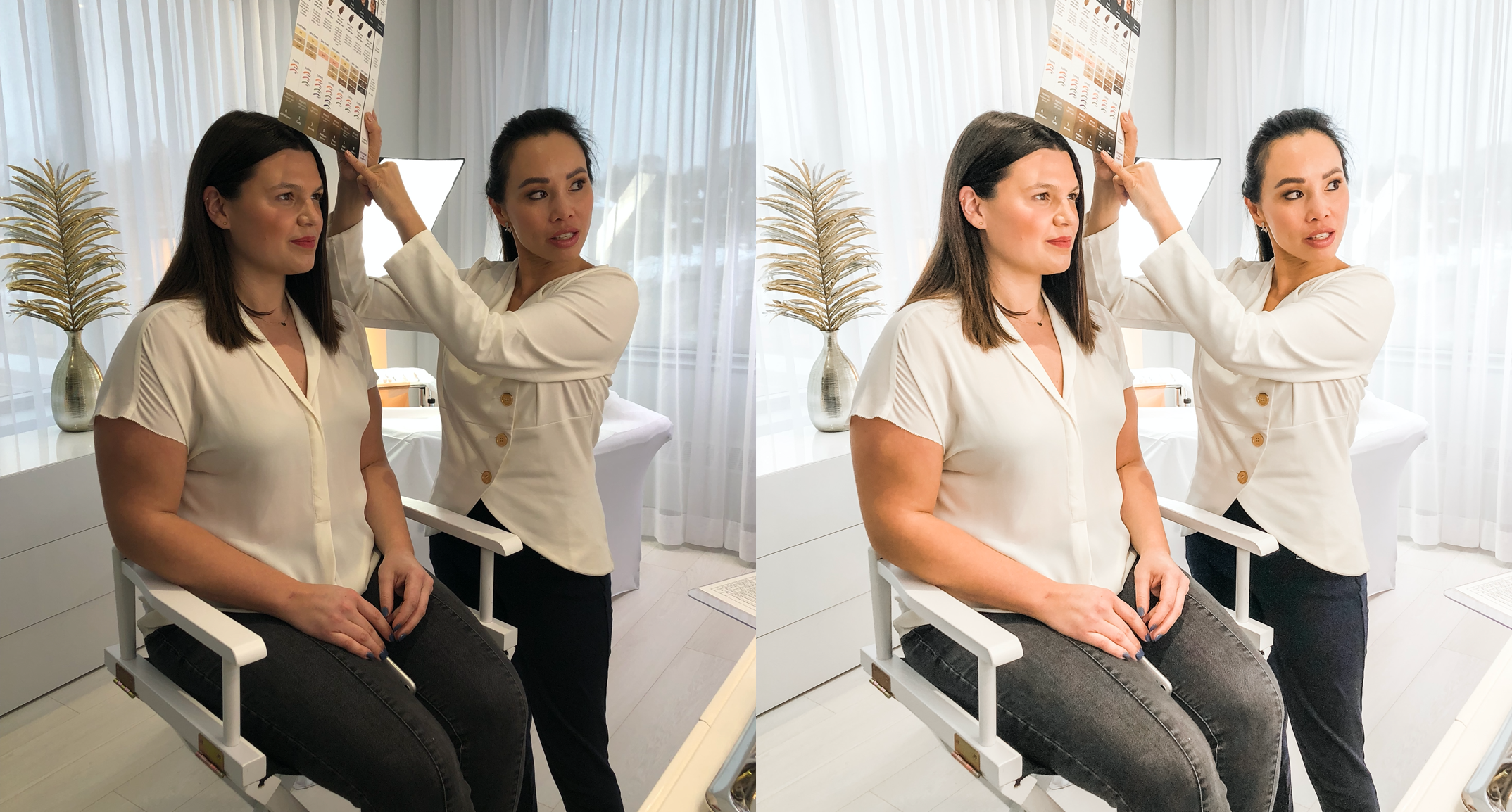
KN95 Face Mask - FAQ

In a post-COVID world, the ‘new normal’ means that PMU artists, as well as clients, are recommended to wear protective masks during all permanent makeup procedures. The KN95 respirator is one of the safest masks for this purpose, equivalent to the standards that medical, front-line workers use to provide 95% filtration. Wearing these masks during all procedures is important due to the close-contact nature of our work. As professionals, it is our responsibility to protect ourselves and our clients at all times.
What are KN95 Masks?
A KN95 respirator is a respiratory protective face mask, designed to help reduce the user’s exposure to airborne particles including very small particles and large droplets. Specified for the Chinese government, hospitals and officials, they are also acceptable for frontline workers in the US & Canada. KN95 masks are rated to capture 95% of 0.3-micron particles.
The Center for Disease Control includes KN95 masks manufactured in the People’s Republic of China under “Respirator-Cartridge Units Approved Under Standards Used in Other Countries That Are Similar to NIOSH-Approved Elastomeric Half Facepiece Respirators,” which may be used in lieu of N95 masks. In other words, KN95 masks are masks manufactured in China with similar standards and performance to N95 masks in the United States.
What is NIOSH?
The National Institute for Occupational Safety and Health (NIOSH) is the United States federal agency responsible for conducting research and making recommendations for the prevention of work-related injury and illness. NIOSH is part of the Centers for Disease Control and Prevention (CDC) within the U.S. Department of Health and Human Services.
How will KN95 masks protect the wearer?
KN95 masks will filter out 95% of airborne particles. This helps protect against viruses, dust particles, pollution and more. While protecting against airborne particles, this also protects the wearer from releasing any particles into the environment.
Does wearing the KN95 mask help protect against COVID-19?
Yes, per the FDA and CDC, KN95 masks are approved for use when treating patients with COVID-19. This approval came on April 3rd and can be seen here.
What is the difference between surgical masks, respirators and surgical respirators?
A KN95 particulate mask blocks at least 95 per cent of very small (0.3 microns) test particles, and while a disposable surgical mask is fluid-resistant and protects the user against large particles (5 microns), droplets, sprays or splatter.
Surgical masks are designed to be worn by healthcare professionals during surgery and nursing, to help prevent contamination of the surgical field or the patient by capturing liquid droplets that are expelled by the user.
Different from a loose-fitting, disposable surgical mask, a KN95 mask tight-fitting to achieve a very close facial fit, which guarantees a minimal leakage around the edges of the mask when the user inhales. If properly fitted, the filtration capabilities of KN95 respirators exceed those of disposable surgical face masks.
What is the difference between N95 and KN95 Masks?
The KN95 Masks are foldable and flat packed whereas the N95 Masks are not.
To be certified as a KN95 mask, the Chinese government requires the manufacturer to run mask fit tests on people with an ≤ 8% leakage. The N95 mask standard does not require manufacturers to run fit tests. N95 masks have slightly stricter requirements for pressure drop while inhaling and pressure drop while exhaling. This makes N95 masks slightly more breathable than KN95 masks.
Does 95% efficiency mean that 5% of the particles get through the mask?
All masks are designed to help reduce, not eliminate, exposures to airborne hazards. For example, N95-rated FFRs have a filtration efficiency of at least 95% against non-oily particles when tested using the NIOSH criteria. The particles used to test the filtration are in a size range that is considered the most penetrating. Therefore, the test methods ensure that the filter media can filter particles of all sizes with at least 95% efficiency. It’s important to remember that the filter efficiency alone does not determine the overall reduction in airborne hazards provided by a mask. There are two other key determinants in reducing exposure: fit and wear time.
Why is only the KN95 mask option available?
We have chosen to sell KN95 masks because they have 5 protective filter layers and a filtering rate of 95% with anti-dust and anti-pollution protection. They are best suited for shipping and their flat design allows for more masks per box.
How to Use/Dispose of KN95 Masks
How do I properly use and dispose of KN95 masks?
Keep your respirator mask clean and dry while wearing. Be sure to read and follow the manufacturer’s recommendations on use and storage. It is very important to follow the steps outlined below when wearing a mask and disposing of your mask afterwards.
- Thoroughly wash your hands with warm water and soap before applying the mask
- Check that the mask is not defective or torn.
- Place the respirator mask over your nose and under your chin. Be sure the nose clip bar is on your nose. Place the elastic bands around each ear.
- Adjust the nose clip (thin metal bar at top of device) around your nose with your fingertips, pushing firmly to close against your nose.
- Be sure to conduct a user seal check every time you put on the respirator mask. Facial hair will cause the respirator to leak, so users should be clean-shaven. Some types of facial hair are acceptable as long as the hair does not lie along or outside the seal.
- Discard the respirator:
- After each client you see
- If it becomes more difficult to breathe through
- If the mask becomes dirty
- The respirator becomes damaged
Do not wear longer than 8 hours.
- DO NOT TOUCH the front of the respirator during removal. It may be contaminated. Only touch the elastic straps to remove.
- Once the mask is removed, dispose of it in a plastic bag, tie it up and place the plastic bag into a garbage can or biomedical waste disposal unit.
- Wash your hands thoroughly with warm water and soap
How often should I wear/change a KN95 mask when working with clients?
Keep in mind, most face masks are intended to be used once and replaced as needed. The length of time you can reuse a mask for is not specified by the CDC. Due to the limited supply, the CDC has a list of recommended reuse methods here.
Rather than an exact count for how many times a mask can be reused, we can provide a guideline. If you notice any deterioration of your mask in fit, performance and breathability, it should be discarded. You should thoroughly inspect the mask after each use and pay special attention to how well the mask is fitting—if your mask straps begin to lose elasticity it will no longer cover your face effectively and should be discarded.
How do I properly store my KN95 masks?
Keep in a clean bag in a hazard-free environment and away from direct sunlight in a climate-controlled area with humidity and temperature range as specified on the packaging.
Can I wash and reuse KN95 masks?
No, dispose of your mask once you are finished using it and when it becomes damaged or stained.
More Information
Difference Between Masks

Definitions
Filter performance: the filter is evaluated to measure the reduction in concentrations of specific aerosols in the air that passes through the filter.
Test agent: the aerosol that is generated during the filter performance test.
Total inward leakage (TIL): the amount of a specific aerosol that enters the tested respirator facepiece via both filter penetration and face seal leakage, while a wearer performs a series of exercises in a test chamber.
Inward leakage (IL): the amount of a specific aerosol that enters the tested respirator facepiece, while a wearer performs normal breathing for 3 minutes in a test chamber.
The test aerosol size (count median diameter) is about 0.5 micrometre.
Pressure drop: the resistance air is subjected to as it moves through a medium, such as a respirator filter.

Reference: https://multimedia.3m.com/mws/media/409903O/respiratory-protection-against-biohazards.pdf
Who is the manufacturer of these KN95 masks and are they certified and approved?
These masks are manufactured by LUOYANG CHUNDU MEDICAL PRODUCTS CO., LTD. and can be found on this FDA approved list.
Other references
https://multimedia.3m.com/mws/media/1831871O/respirators-from-asia-imported-and-distributed-by-fema-technical-bulletin.pdf (3M versions KN95 masks + videos how to use)
Make sure to check out our blogpost on re-opening your business safely.
Shop KN95 Disposable Face Masks and Bundles:





Leave a comment
This site is protected by hCaptcha and the hCaptcha Privacy Policy and Terms of Service apply.